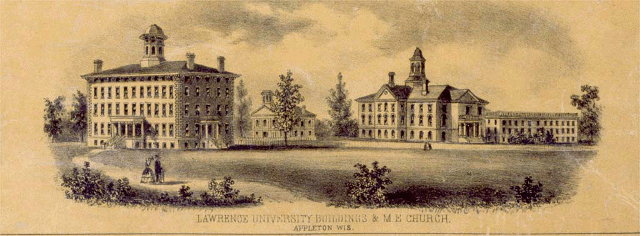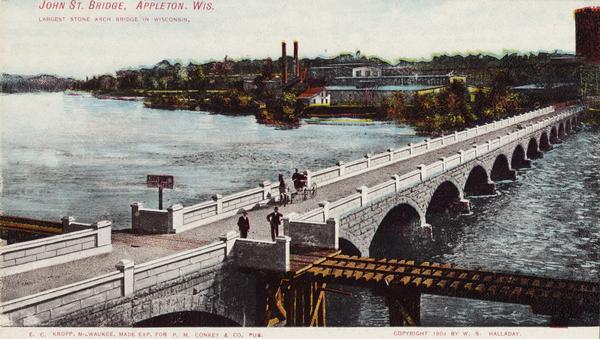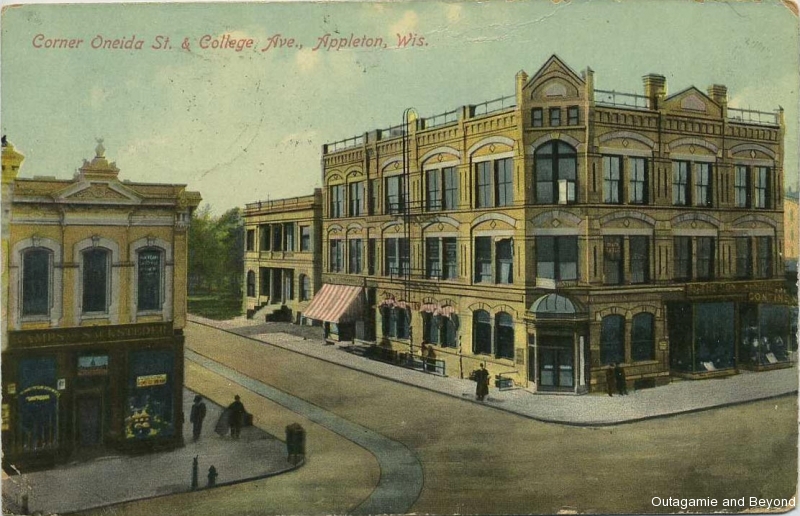
The territory where Appleton is today was traditionally occupied by the Ho-Chunk and the Menominee. The Menominee Nation ceded the territory to the United States in the Treaty of the Cedars in 1836, with Chief Oshkosh representing the Menominee. In the Menominee language, Appleton is known as Ahkōnemeh, or "watches for them place". Fur traders seeking to do business with Fox River Valley Indians were the first settlers in Appleton. Hippolyte Grignon built the White Heron in 1835 to house his family and serve as an inn and trading post. Germans, Dutch and Poles were some of the first immigrants to come to Appleton. Oneida Indians also live in the Oneida reservation just north of town. Appleton shares its history with Lawrence University, for the two grew simultaneously.

With the financial backing of Amos Lawrence, the Lawrence Institute was chartered in 1847. Samuel Appleton donated $10,000 to the newly founded college library, and in appreciation, his name was given to the community. Education was a priority in Appleton. In 1850, Daniel Huntley taught in the first free public school. The St. Mary Catholic Church opened the first parochial school in the community in 1864. The first 4 year high school began operating in 1876 in the Hercules School and Kindergarten was initiated in 1898 in Lincoln School.

The Vulcan Street Hydroelectric Central Station began operation on November 25, 1882 in Appleton. The Vulcan Street Plant represents an early use of hydropower to generate electricity and perhaps one of the earliest examples of a hydroelectric plant that sold electricity commercially and provided incandescent lighting service to the public. Not too long afterward, in August of 1886, Appleton was the site for another national first, the operation of a commercially successful electric streetcar company. Electric lights replaced gas lamps on College Avenue in 1912.

The paper industry, beginning with the building of the first paper mill in the city in 1853, has been at the forefront of the development of Appleton. Many retail business also lined the streets on College Avenue. Appleton made history when Alfred Galpin put together his own telephone in 1877, connecting his bank and his residence. Later, a druggist installed several phones in his store, linking them with those in other offices. This Wisconsin Telephone Company purchased this exchange in 1881. Harry Houdini(1874-1926) grew up in Appleton after his family immigrated there from Hungary in 1878.

Comments
Post a Comment